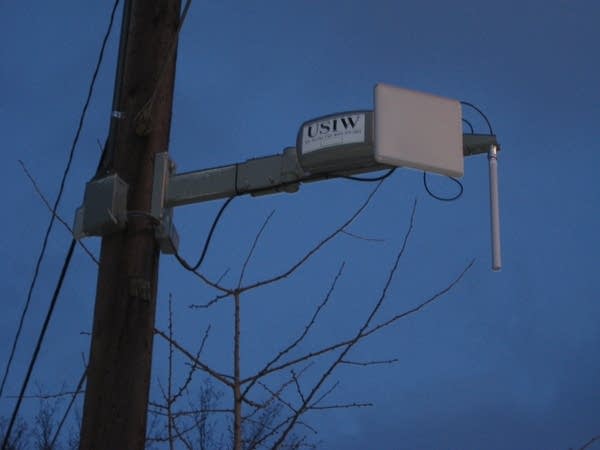Minneapolis Wi-Fi network still faces barriers

The planning and construction of the city's Wi-Fi network began more than two years ago. But members of the Minneapolis Park Board, say they didn't find out the city would need to use park land until late last year.
Minneapolis city officials say they'd told park board staff about the plan.
"I'm not aware of any staff that knew about it," said Park Board Commissioner Scott Vreeland. "I don't know... thirdhand information of somebody they said something to someone. It certainly wasn't brought to the commissioners."
The city's plan involves hanging equipment the size of microwave ovens from more than 40 light poles near the city's lakes and parkways.
Create a More Connected Minnesota
MPR News is your trusted resource for the news you need. With your support, MPR News brings accessible, courageous journalism and authentic conversation to everyone - free of paywalls and barriers. Your gift makes a difference.
"Could you design them (wireless transmitters)in the shape of a squirrel?"
However, the Park Board would rather the city explore other options.
For one thing, Vreeland says the grey radios are ugly and conspicuous.
"Is it a design issue? Can something be made to look like something people wouldn't notice," Vreeland said. "Could you design them in the shape of a squirrel?" he laughed.
Last month the Park Board turned down the city's formal request to use park land for the network, pending further study. So maybe the city will ask the network's builder, USI Wireless to shape some of the equipment to look like indigenous flora and or fauna.
City officials say they are in the process of improving their relationship with the park board, but that's the subject of another story.
But in the meantime, the delays are costly.
The city pays USI Wireless more than $1 million a year to use the network but so far they're not getting much use out of it because the signal doesn't cover the whole the city yet. In fact, city officials project this year, they'll only be able to use about $50,000 worth of service.
"One of the things, I think that is holding back departments is, they really want the network completed," said Lynn Willenbring, the city's Chief Information Officer.
Willenbring says gaps, or dark areas, in the network will present problems especially for mobile employees like police officers.
"So they're not going to have the full-functionality on their computers in the squads that they will when they're in a fully operational area of the wi-fi network," Willenbring said. "Which means some of the video they're planning on using with Wi-Fi will not be available."
In addition to dark spots near park land there are other areas of town without a wireless signal.
The city is installing new light poles to replace decorative fiberglass light poles that weren't strong enough to hold wi-fi radios. The replacement and electrification of the poles costs about $1 million.
The good news is, USI Wireless, the builder and administrator of the network reports they've signed up more than 10,000 subscribers. And once the city finishes replacing the decorative poles this spring, USI will begin advertising for more customers.
However, it's still not clear if people who live near city park land will be able to get the service.
